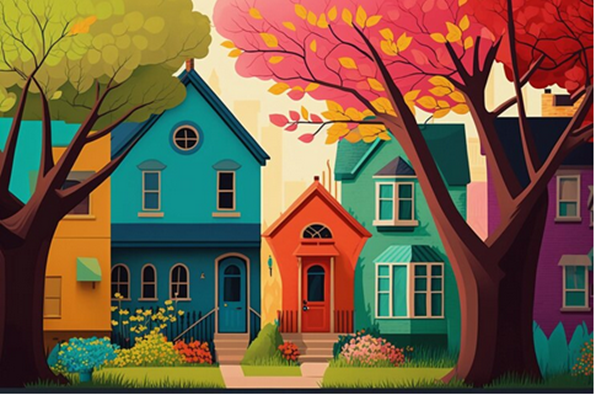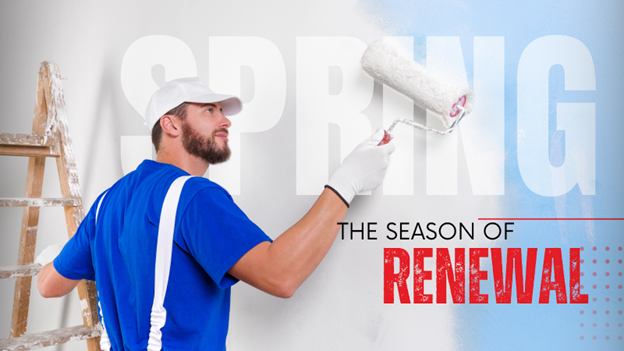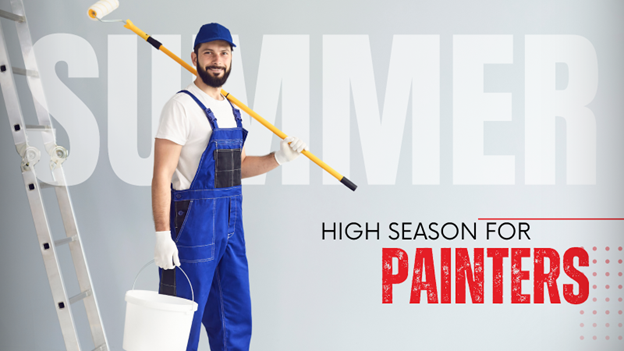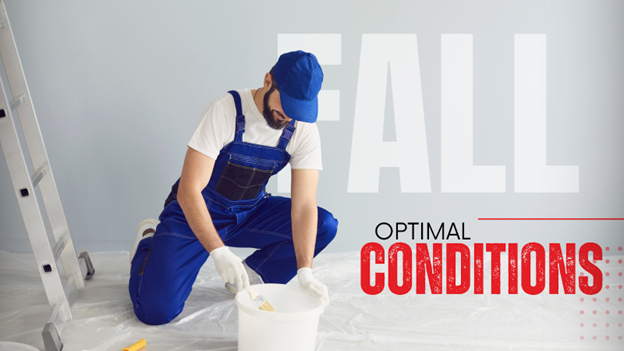
Choosing the perfect season to paint your house can be quite tricky. You have to consider the weather, winds and humidity for drying the paint. You will also need to consider your comforts when doing the actual project. Painting your home is an investment in its longevity and curb appeal, not merely a superficial improvement.
Aside from budget considerations, to get started, once your materials and tools are in place, the timing should be perfect to ensure the longevity and quality of your work.
However, when would be the ideal time to start this endeavour?
The key to the solution is realising how the changing seasons affect painting. With careful planning, you can achieve the perfect paint job. In case your project will have to be pushed back to the next season, don’t worry because that will mean more time for preparation.
Let’s examine the subtleties of each season and determine when it’s best to paint your house.
Why Season Matters in House Painting
The Procedure for Application and Drying
Seasons have a big impact on how paint dries and sticks to surfaces. Conditions that are wet, humid, and/or have extreme temperatures can all degrade the quality of your paint job.
Thus, picking the ideal moment guarantees the best outcomes. In order to get return of investment with your paint job, you need to factor in the appropriateness of the season.
Painting Interior or Exterior
Painting the interior from the exterior will require different requirements and preparation. You can handle one project at a time so that you can ensure quality paint jobs. Let’s first discuss the differences between exterior and interior painting before moving on to particular seasons:
The process of painting your home’s exterior includes painting the doors, trim, and walls. Weather extremes, UV rays, and temperature changes must all be tolerated by exterior paint.
Painting on walls, ceilings, and other interior surfaces is the main emphasis of interior painting. Interior painting tasks are less impacted by weather conditions than exterior painting. You can be more creative when it comes to interior painting and can come up with different patterns and prints.
Now, let’s discuss each season and their individual advantages.
Spring: The Season of Renewal

For good reason, spring is a popular season for house painting. With mildly warm weather, you are assured that your paint job will not be easily damaged and that it will not take forever to dry it. Here are some reasons why you should choose to paint in spring.
Mild Weather: Springtime brings mild temperatures that are ideal for paint to thrive and for painters to work.
Reduced Humidity: Springtime brings with it a tendency for decreased relative humidity, which helps paint to dry uniformly without bubbling or blistering. But also, remember this:
Rainy Days: If you plan to paint, spring showers may cause delays. Make appropriate plans and select days without rain.
Temperature fluctuations: Be ready for sudden changes in temperature. For optimal effects, paint during periods of stable weather patterns.
Summer: High Season for Painters

Summertime is the busiest time of year for painting houses because there are a lot of benefits, however, the extreme heat also has its disadvantages with the paint and paint adhesion. Let’s discuss the pros and cons below:
Long Daylight Hours: Longer daylight hours facilitate more efficient working hours. You can start early in the morning and expect faster drying times due to the heat of the sun.
Predictable Weather: Summertime usually provides steady weather, perfect for projects outside. You can expect that 90% of the time, you will receive sunshine.
However, exercise caution with:
High Temperatures: Paint adhesion and finish might be negatively impacted by paint that dries too quickly. Make sure that you check the kind of paint that you are using and its drying times. How will it be suited for the summer season?
Humidity: High humidity might cause possible surface problems as well as longer drying times.
Painting is also a great summer time activity for the family. You can do the base paint with the kids and finish off the next day with cleaner, more polished strokes and layers.
Fall: Optimal Conditions

Many homeowners would prefer fall and would consider it as a great time to do exterior paint. Fall frequently takes centre stage as the ideal season for painting and here are the reasons why:
Cool, Stable Weather: Fall offers the perfect mix of warmth and cold, making it the perfect season for painting and drying.
Low Humidity: Paint will cure more uniformly and last longer in an environment with less humidity.
However, watch out for:
Reduced Days: Take into account the reduced daylight hours while scheduling your painting time.
Getting Ready for Early Winter: Complete your work before the weather becomes chilly.
Winter: Indoor Opportunities

Winter can also be a good time to paint your house or get started with a painting project. Winter painting projects are difficult for exteriors, but successful for interiors. Here’s why:
Controlled Climate: The temperature and humidity can be kept constant indoors.
But keep in mind these difficulties when painting the outside.
Cold Conditions: Paint application and drying are impacted by cold temperatures. Put off outside improvements until the warmer months.
Conclusion
Painting your house or new coffee shop is an exciting process, however, don’t immediately get started without proper planning in place, especially in regards with timing and choosing the most ideal season for exterior painting.
Consider drying times, temperature fluctuations, humidity, extremely high or extremely low temperatures.
Selecting the ideal season for painting your home is essential. Plan ahead, speak with experts, and take into account your unique demands.
